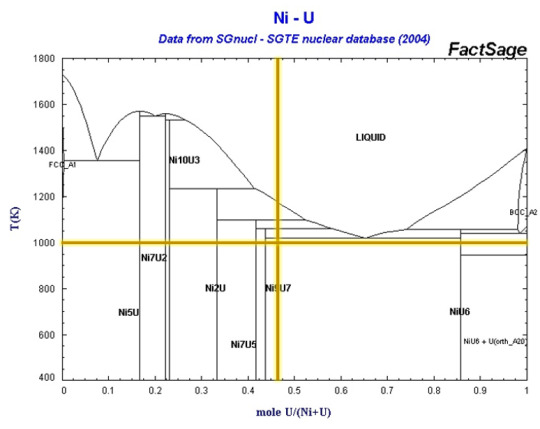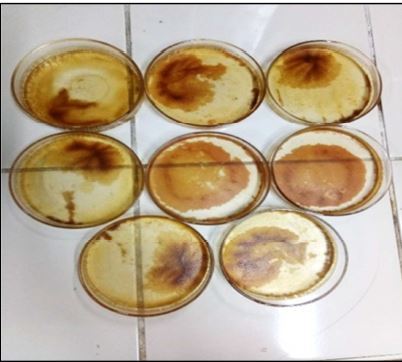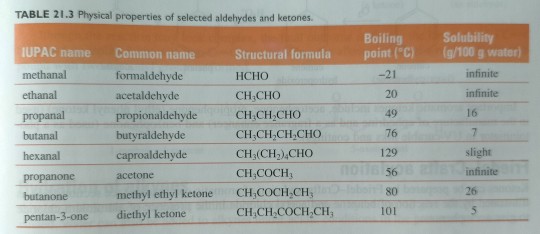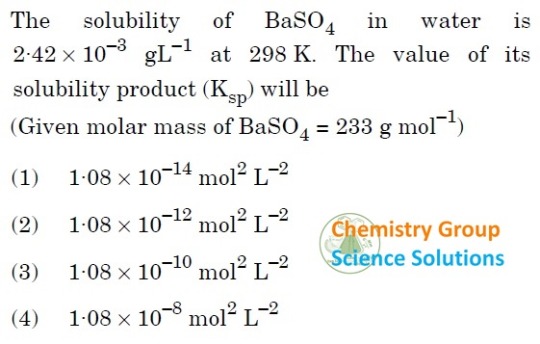#solubility
Photo


Intermediate Compounds and the Nickel-Uranium Binary System
Phase Poll #11 concluded yesterday with a fairly even split between nickel (53%) and uranium (47%). We also got one vote for a temperature of 1000K, thanks to @grimmtaupe. The Ni-U diagram is really only considered in the space of nuclear alloys, and isn’t very popular even then, so we’re going to spend some time on this post talking about intermediate compounds.
I’ve already briefly discussed congruently melting compounds vs. incongruently melting compounds, after the conclusion of phase poll #7. These definitions focus on phase transitions, while defining intermediate compounds starts to delve into the realm of solid solubility. Uranium and nickel have very low solid solubility below ~600°C (or ~873K). This can be seen from the numerous vertical lines on the phase diagram, each of which represents a specific intermediate compound, defined as simply phases with compositions that fall between two neighboring phases. Intermediate compounds almost always have a different crystal structure than the neighboring phases as well.
Solid solutions, on the other hand, can be continuous (like in the Ni-Cu phase diagram), primary/terminal (the fcc Ni phase and the bcc U phase at either side of the Ni-U phase diagram), or intermediate (like the hcp phase in the Ag-Al phase diagram). The primarily vertical lines on a phase diagram can thus give a visual indication of the solid-solubility of two elements across their compositional space.
Back to the chosen composition, our alloy would be primarily Ni9U7. Not much is known about this compound, but the thing about phase diagrams is that they’re difficult to create, even if computational tools have accelerated the process in modern times. Some research (ref. 3 below) into nickel-uranium alloys suggests that the phase is actually U10Ni13, and crystalizes in a monoclinic crystal structure. If we consider the temperature as well, we can see from our previous definitions that Ni9U7 is an incongruently melting compound. For the nickel uranium system in general, small additions of nickel have been shown to promote sintering of uranium carbides.
Sources/Further reading: ( Ni-U: 1/image 2 ) ( Ni-U: 2 ) ( Ni-U: 3 ) ( Phase diagrams: 1 ) ( Phase diagrams: 2 ) ( Phase diagrams: 3 )
More phase diagrams: ( image 1 ) ( weight and atomic percent nickel, 1 ) ( weight and atomic percent nickel, 2 ) ( weight and atomic percent uranium )
#Materials Science#Science#Nickel#Uranium#Phase diagrams#Phases#Compounds#MyMSEPost#PhasePosts#Solubility
13 notes
·
View notes
Text
The solubility of a gas in a liquid is affected not only by temperature but also by pressure.
"Chemistry" 2e - Blackman, A., Bottle, S., Schmid, S., Mocerino, M., Wille, U.
2 notes
·
View notes
Text
For example, butanoic acid (table 23.2) has a higher boiling point than either pentan-1-ol or pentanal.

"Chemistry" 2e - Blackman, A., Bottle, S., Schmid, S., Mocerino, M., Wille, U.
#book quotes#chemistry#nonfiction#textbook#boiling point#solubility#electrons#acetic acid#propanol#propanal#butanoic acid#hexanoic acid#heptanol#heptanal
0 notes
Text

1 note
·
View note
Text
Tilapia By-products: Characterizing Fish Protein Hydrolysate

Abstract
Waste management has been a significant problem in the fish processing industry due to environmental and public health impacts. Food products can be developed from the by-products of the aquaculture industry. This study extracted and characterized fish protein hydrolysate (FPH) from tilapia by-products (viscera). It was produced by enzymatic and acid hydrolysis. The degree of hydrolysis (DH), protein pattern, solubility, emulsifying, and foaming properties of the FPH were determined. The yield of the fish protein hydrolysate increased with increasing concentration for acid hydrolysis. Decreasing total protein was observed with the use of increasing HCl concentration. The DH ranged from 12.79-13.95%. The molecular weight distribution of fish protein hydrolysate using acid and enzymatic hydrolysis was analyzed by SDS-PAGE. Limited hydrolysis formed larger peptides which led to improved emulsification and foaming properties of the fish protein hydrolysate. Tilapia intestine crude enzyme hydrolysis produced FPH with higher solubility in water than using acid solutions. The optimum concentration for acid hydrolysis to produce FPH with high emulsifying activity index was found to be 4M acid solution. The Foaming stability for both the acid and enzymatic hydrolysis were low ranging from 9.17% 10.83%. Based on their characteristics and quality, fish protein hydrolysate extracted using acid and enzymatic hydrolysis were within the criteria that can be used as a value-added product in nutraceutical supplements such as sources of small peptides and amino acids in dietetic foods. The improved solubility, emulsifying and foaming capacities of tilapia protein hydrolysate warrant its application in formulated food systems.

Introduction
Tilapia are prepared by bleeding, gutting, beheading, filleting, skinning, and trimming before being bought by consumers. The potential use of fish by-products should be considered. Increasing focus on the utilization of fisheries by-products in product development and value addition can be explained through waste management efforts and characterization of the raw materials as a potential food protein source and functional foods. Several food products could be obtained from the wastes of the aquaculture by-products industry.
Fish protein hydrolysates are products of hydrolysis reaction by breaking the peptide bonds in proteins resulting in shorter peptides or amino acids which are easier for animals to absorb. Extraction of proteins from by-products and conversion to high value products, such as bioactive peptides is a very promising alternative. Bioactive peptide production from fish by-products has received growing attention due to their physiological activities as antioxidant and antihypertensive suitable for healthcare and nutraceutical applications (He et al., 2013; Je et al., 2005; Jung et al., 2006).
The considerable volume of tilapia produced in the country, aside from the significant requirement for processing before final sale generates a large amount of solid waste or residues and by-products, which account for up to 70% of the total fish weight. These so-called wastes composed of the head, carcass, bones, skin, fins and viscera of tilapia are traditionally considered of low economic value and are disposed in land-based waste disposal system or at sea. Moreover, a large amount of fish is also being discarded each year due to fish kill and disease outbreaks. If not properly discarded or used, they can be an important environmental contamination source since the release of these organic wastes might significantly change the community structure and biodiversity of the benthic assemblages(Caruso, 2015). It is estimated that 32 million tons of waste are produced from the total fish capture and are not used as food (Kristinsson & Rasco, 2000). One of the important waste reduction strategies for the industry is the recovery of marketable by‐products from fish wastes (Arvanitoyannis & Kassaveti, 2008). The study was conducted to produce and characterize fish protein hydrolysate from tilapia by-products.
Source: Tilapia By-products: Characterizing Fish Protein Hydrolysate | InformativeBD
#diversity#fungal diversity#Fish protein hydrolysate#acid hydrolysis#solubility#Enzymatic hydrolysis#emulsifying properties
1 note
·
View note
Text


borrowed my mom’s neopastels and scribbled in my sketchbook 💫
#i’ve been wanting to get the water soluble neocolors#but my mom only had the oil pastels so i tried those instead and might buy the neocolors sometime#SO creamy and smooth to work with ahh i usually don’t even enjoy oil pastel all that much#horses#horse art#art#oil pastel#neopastel#illustration#aware that these are kinda terrible but i love the colors#oil pastels are good for getting in touch with your childish side of art#my art
3K notes
·
View notes
Link
The solubility of a gas in water depends on temperature, the partial pressure of the gas over the liquid, the nature of the water and the nature of the gas.
0 notes
Text
As per Business Intelligence Insights (BII) study, the global Plant-Based Meat Market attained revenue growth of 4,519.5 million in 2021 and it is projected to reach around USD 12,712.4 million by 2030, growing at a 13.8% CAGR.
#meat-based products#nutritious composition#water absorption#solubility#emulsification#viscosity#anti-oxidation#texture#fiber#vitamin C#and iron.
0 notes
Text
Design, Development and in vitro Assessment of Flurbiprofen Microemulsion Gel for Transdermal Drug Delivery
The point of flow research is to foster flurbiprofen microemulsion gel for transdermal conveyance. To set up a microemulsion oil, surfactant and co-surfactant choice is one of the significant measures. Chosen to get ready various proportions of oil and surfactant blend utilizing ternary stage graph. In light of aftereffects of physicochemical properties, we have improved one detailing. The improved microemulsion definition integrated into carbopol P 934 gel base. The In vitro dispersion of medication discharge shown greatest (98.6% in 12hrs) for arranged microemulsion gel than showcased gel (60.5% in 16 hrs).
See the link here: journaljpri.com
0 notes
Text
Because carboxylic acid salts are water soluble, we can convert water-insoluble carboxylic acids to water-soluble alkali metal or ammonium salts and then extract them into aqueous solution.
"Chemistry" 2e - Blackman, A., Bottle, S., Schmid, S., Mocerino, M., Wille, U.
#book quote#chemistry#nonfiction#textbook#carboxylic acid#solubility#chemical reactions#alkali metal#ammonium#salts#extraction#aqueous solution
0 notes
Text
Table 21.3 lists the boiling points and solubilities in water of several low-molar-mass aldehydes and ketones.

"Chemistry" 2e - Blackman, A., Bottle, S., Schmid, S., Mocerino, M., Wille, U.
#book quotes#chemistry#nonfiction#textbook#boiling point#solubility#water#molar mass#aldehyde#ketone#methanal#formaldehyde#ethanal#acetaldehyde#propanal#propionaldehyde#butanal#butyraldehyde#hexanal#caproaldehyde#propanone#acetone#butanone#methyl ethyl ketone#pentanone#diethyl ketone
1 note
·
View note
Photo

1 note
·
View note
Link
1 note
·
View note
Text

Trying oils in sketchbook.
#art#artists on tumblr#traditional art#camille henri#portrait#portrait practice#sketch#oil sketch#painting#peinture#croquis a l’huile#sketchbook#carnet de croquis#peinture à l’huile soluble à l’eau#peinture à l’huile#oil painting#etude#study
152 notes
·
View notes
Text


So I finished this portrait a few days ago and even though I very much didn't like the pencils I used I think it came out pretty neat 🙂
#my art#derwent coloursoft#i tried giving them their best shot by using an alcohol marker base and odorless mineral spirits#but the grainy crayon look the pencils give was inevitable#and turns out they're very water soluble even though they're not supposed to be 😅#so i think all the colors got diluted when i sprayed it with a fixative#as an artist grade pencil i expected different#dont hate em im just disappointed#but on the bright side i think my first attempt at the blur effect was a success
697 notes
·
View notes
